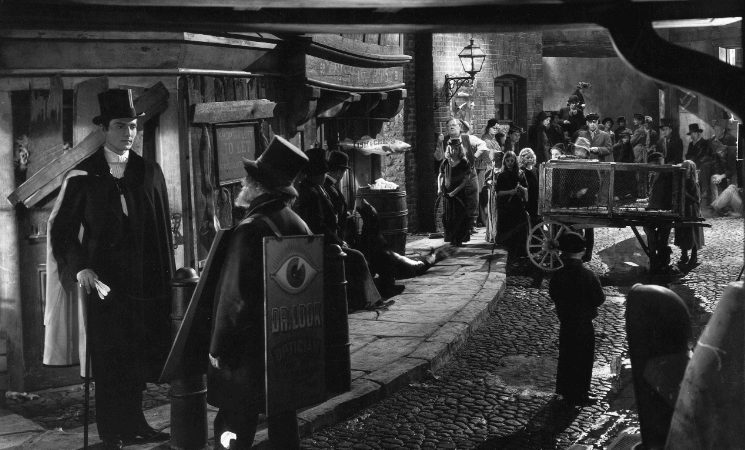Content Warning: This article makes reference to self-harm, drug abuse, domestic abuse, and suicide.
Anyone who has seen the Saw franchise knows how laughable the serial killer Jigsaw’s logic can be. So much so that it’s become widely memed. Forgot to wash the dishes when it’s your turn? Time to remove your arm with a cleaver! Cut someone off in traffic? Get ready to wake up in a reverse bear trap. Throughout the Saw franchise, Jigsaw’s justification ranges from targeting crooked cops to punishing a guy for…smoking cigarettes? His approach to explaining his targets’ so-called wrongdoings remains consistent, but the reasoning can certainly be unpredictable at best.
But, despite the humor that can be found in Jigsaw’s ‘morality,’ from a characterization perspective, it is rather fascinating. Jigsaw has a very particular philosophy of life that, yes, contradicts itself, but is applied unflinchingly to every one of his victims. Multiple sequels flesh out John Kramer’s (Tobin Bell) (admittedly convoluted) backstory. Each one of his life experiences adds further justification as to why he thinks and does things the way he does. So let’s have a deeper dive into the morality of John Kramer, otherwise known as the Jigsaw Killer.
“Live or die, make your choice.”
Saw sets up the foundations of how Jigsaw sets up his ‘games.’ To take it back to basics, the general idea is for his participants to go through some form of physical endurance/pain, or to make another participant go through it, to survive. At the start of each game, a tape recording explains to the participant(s) why they’re there, after which a timer starts. The idea of the tape, aside from briefing them on how to escape the trap, is to cause them to reflect on their perceived wrongdoings while in the trap. He essentially presents them with the consequences of their actions, albeit to an extreme and, sometimes, reductive degree. Realistically, the participant wouldn’t have time to consider their moral crimes in life, considering they usually have just one minute to escape. The point is for the ‘contestants’ to focus on a combination of self-reflection and survival. Jigsaw’s intended purpose is for his participants to change their ways and gain a newfound appreciation for life. Whether this is successful or not. Well, let’s just say it leaves a lot to be desired, but more on that later.
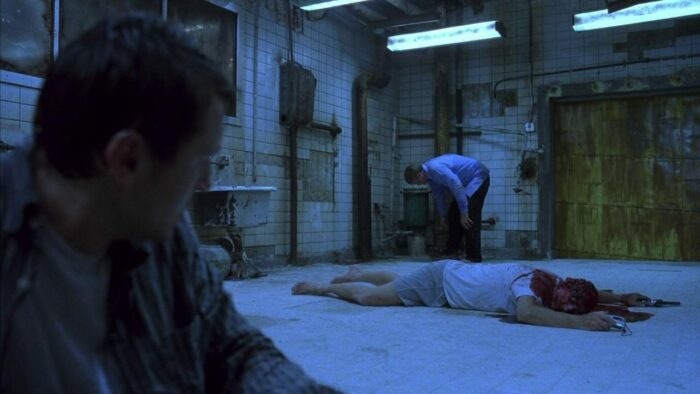
In games that include multiple participants, there is always a connection between them. For example, in Saw, Dr. Gordon (Cary Elwes) and Adam (Leigh Whannel) don’t know each other personally, but Adam knows of Dr. Gordon. Adam was hired to photograph Dr. Gordon to capture evidence of his dirty deeds to blackmail him with. The intention is to cause tension and conflict that will potentially influence the participants’ choices during the game. If you are in a trap with a person who has either personally hurt you, or who you know for a fact has committed an immoral act, then the likelihood of being motivated to save said person is, in most cases, significantly reduced. Jigsaw expects certain participants (not all of them) to take up the reigns of moral policing, just as he does. Although he is giving them a choice, he wouldn’t mention certain information regarding the perceived morals of particular participants unless he intended for this to factor into the decision-making.
Choice is the operative word in the quotation above. Jigsaw merely presents participants with the rules, whether they choose to play along is up to them. If they do follow the rules, then they can (and in the occasional case, do) survive. For example, Saw II involves a mass trap—it’s the most escape room-y of all of the Saw traps in my opinion, as it consists of multiple participants being trapped inside a house where a nerve gas is slowly being released. They must make their way through a series of rooms to collect antidotes, while still undergoing individual traps. There are rather specific instructions from the beginning on how to save themselves and what not to do if they wish to live. In the first room, a note warns the group against using a key on that particular door, in no unclear terms. When one of the participants ignores the warning and uses the key, a revolver on the other side of the door fires through a peephole, killing him. Don’t say Jigsaw didn’t warn you!
Similarly, Jigsaw gives Eric Matthews (Donnie Wahlberg) explicit instructions on how to ensure his son’s safety—he simply needs to stay in the room with him and wait for two hours. Simple as that. Jigsaw very sneakily reveals where his son is with a play on words: “he is at a safe place,” literally inside a safe. In the most technical, pedantic terms, Jigsaw is giving his participants all the information they need. If we, as the audience, look at this objectively, then he is playing fair and isn’t attempting to blatantly trick his participants at any point. Look, I work at an escape room myself, so I understand the frustration of players who don’t listen to the brief properly.
It’s easy to watch a Saw film and yell at the screen, “He told you how to do it! Just listen to the tape! Hurry up, you’re on a time limit!” I mean, snail-man Jeff (Angus Macfadyen) from Saw III is one of the most infuriating characters in all of the films. Where’s your sense of urgency, man?? But of course, this is the nature of horror films; the characters are often perceived to be ‘stupid’ by the audience so we get a certain level of pleasure out of a) being angry at them and b) seeing them get their comeuppance when they die. Horror is inherently a voyeuristic genre, allowing audiences a sense of catharsis in thinking and expressing certain emotions or thoughts that would normally be considered immoral, inappropriate, or generally taboo. This concept fits perfectly with the torture porn subgenre. The reason why these films are so entertaining and appealing is because the excessive gore and violence wouldn’t be fun in real life, but in a fictional world, it is. It’s the horrible, disgusting parts of life with no consequences.
But I digress. Obviously, being in one of Jigsaw’s traps and deciding whether to play the game or not isn’t much of a choice, considering the only alternative is death. However, Jigsaw presents the situation in such a way that makes the participant appear to be the driving force, fully in control of the outcome. Hope, and the chance of survival, no matter how slim, are integral to each of his traps. This is why, when Amanda (Shawnee Smith) is being tested to see if she’ll abide by Jigsaw’s rules in Saw III, he admonishes her for not doing so. Her traps guarantee that the participants have a 0% chance of survival—she solders the door shut in one of the traps, puts an unopenable lock in another trap, and directly shoots the main victim in Saw III. Her anger and volatility that leads to such actions, threatening the very core of Jigsaw’s reasoning for his traps, is why he then kills her and revokes her position as his successor. It is that important to Jigsaw, as he claims, “I don’t condone murder, and I despise murderers.” Ensuring his participants have a choice and a chance of survival is a massive part of his trap set-ups.
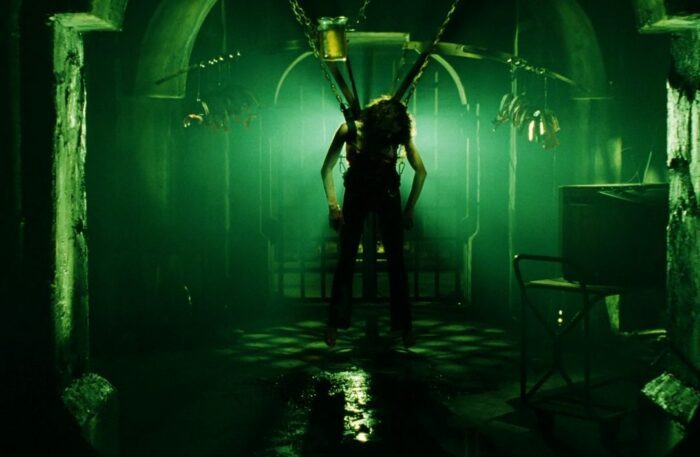
“I’ve never murdered anyone in my life.”
This leads us to accountability. Jigsaw loves loopholes. When he tells Eric Mathews that he’s never killed anyone, he is technically right. But from a moral (and realistically, legal) standpoint, if you put a gun to someone’s head and tell them to pull the trigger, you’re obviously complicit in the following events. Despite Jigsaw’s coercion, he is right in saying he ultimately leaves the decision to his participants. However, this is sort of nullified when you consider that Jigsaw kidnaps and drugs his victims to put them in the trap in the first place, so it removes any autonomy or decision to participate in the game. And again, if the only alternative is death, it isn’t much of a choice. It’s an extremely flawed justification for his own supposed moral high ground.
There is, however, an interesting conversation regarding the morals of the participants themselves. To survive her trap, Amanda had to cut a man open to retrieve a key. Technically, she murdered him but obviously wouldn’t be prosecuted for it considering the circumstances. Ultimately, in these cases, the self-preservation of the participant is being tested; will they take a life to save their own? Psychologically, the human survival instinct is perhaps the strongest we have—-the primal, evolutionary force inside all of us. It kicks in without us even realizing what we’re doing in extreme situations, and a Jigsaw trap is the perfect example of this. Of course, you’d do everything in your power to preserve your own life, should the circumstances dictate it. It feels so obvious that condemning someone for acting upon that survival instinct wouldn’t even come into it. Clearly, the law agrees in these films—it would be quite ludicrous for Amanda to get arrested for murder or even manslaughter when she didn’t put herself in that situation. Going back to my previous point, Jigsaw is premeditatively committing a crime by drugging and kidnapping his victims to put them in the traps in the first place. This alone overrules any necessary, ordinarily immoral actions taken by the participants during the game.
Even with the traps, there is a contradiction here, considering some of them rely on actively having to harm the other participant to survive. For example, Saw VI makes a point of a health insurance executive having to select people to die, such as with the shotgun carousel. These people are not active participants, but secondary victims to William’s (Peter Outerbridge) game with no chance of survival. In that case, Jigsaw is ensuring that their death is inevitable. Does that not make him a murderer? Even if he’s forcing someone else to pull the trigger? The game of Saw VI is far more personal than most, and thus, different in its nature. William is responsible for denying Kramer’s health insurance claim, along with other members of his company who appear in the traps. Therefore, Jigsaw is purposefully putting William in a position of playing God; choosing who lives or dies, as he is equating that to his business practices. There is a level of irony to this, considering Jigsaw, as a serial killer, is doing the same but in a more literal sense. By placing innocent people (which he does in this case) inside a trap, at the mercy of another human being’s impossible and fatal choice, he is going against his own philosophy of teaching people a moral lesson, and for them to cherish their lives by manipulating a situation to result in at least one unpreventable death.
I’d say that in most cases, the games rely on every participant working together to escape and survive. It massively depends on the victims and their perceived moral crimes. One of my favorite examples is in Saw V. Each participant in the game was complicit in an event that caused an empty building to be burned down, killing a homeless man in the process. They make their way through various rooms, completing joint traps in each of them. When they reach the final room, the trap involves giving ten pints of blood between them. All of the previous traps are designed for each of the five participants to survive. But, because they decided to be selfish, the two remaining participants had to give enough blood to almost kill them. As a direct result of harming others, they shot themselves in the foot. Their attempt at self-preservation caused the opposite to occur.
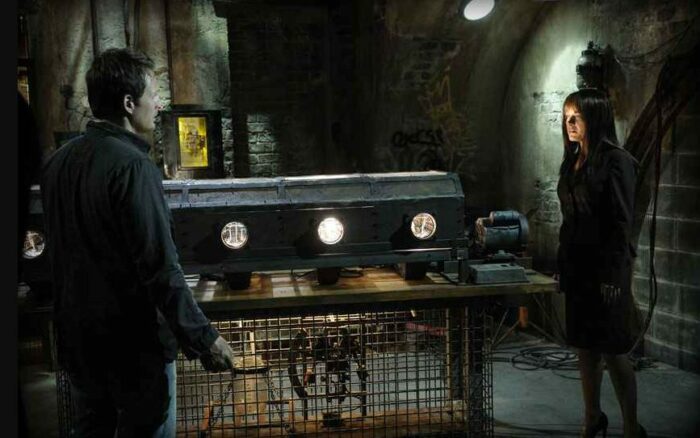
In games such as these, Jigsaw is trying to get the participants to work together, and have each other’s backs so they’ll all survive. However, the games are specifically targeting selfish and self-serving participants, so it feels as though he’s relying on their nature to trip them up. Whether or not he truly wants them to succeed is an intriguing question indeed. It often feels like he’s setting them up to fail. Realistically they always have a chance, but the circumstances are set up in such a way that the odds lean towards their demises from the very moment the timer starts.
“Those who don’t appreciate life do not deserve life.”
Jigsaw’s main motivation is to make his participants cherish their lives. The idea is that he teaches them some form of moral lesson that they can move forward with if they do survive the game, but the lesson is pretty much different flavors of the same thing—appreciating life and not wasting it in any way. For instance, Jigsaw targets a man in Saw III who is a repeat offender, constantly being in and out of prison. Now, obviously, the approach to criminals and the justice system lacks nuance (did you really expect nuanced social commentary from a Saw film), but the idea is that the participant is wasting his life by a) spending it in prison instead of doing something meaningful (I suppose) and b) not learning from his actions or developing as a person. How genuine this is is questionable—even if the pure intention is there, the method isn’t compassionate by any stretch of the imagination.
Amanda is an excellent case study since she is living proof of Jigsaw’s methods. His reasoning for placing her in a trap was that she was a drug addict and that surviving this experience would give her a new lust for life. I suppose the idea is that she will no longer need to use drugs to substitute for a lack of satisfaction or gratefulness for being alive. After her trap, we never overtly see her using drugs again, but it’s impossible to tell whether she continues or not. Disregarding this, we see Amanda self-harming on multiple occasions after surviving her trap. Evidently, she is not satisfied or happy in her current state. During these scenes, it’s also important to note that it is interspersed with flashbacks to conversations with Jigsaw and helping him with the traps. If Amanda’s trauma stems from her previous life, then why would these scenes with Jigsaw be at the forefront of her mind while self-harming? Clearly, she is still deeply traumatized, even more so than before the trap, and Jigsaw has not ‘fixed’ this. He has, in fact, made it worse.
There does also appear to be an ulterior motive for Jigsaw, considering he recruits Amanda as an apprentice of sorts to his killings afterward. Was this always his plan? It remains uncertain. But irrespective of how premeditated it was, he does take her under his wing as a fellow serial killer. There is an illusion of choice—do we really think he would have let her go free if she rejected his proposition? Or if, at any point, she decided to back out? She could easily turn him into the police with all the evidence she has access to (she was already taken in for questioning after surviving her trap) so it would be far too risky to let her go. Yes, Jigsaw likes to give people a choice, but somehow I doubt that would overrule his sense of self-preservation if Amanda were to directly threaten it. Realistically, she never chose to be a part of his ‘teachings’ by assisting his games. I think it’s fair to assume that if she said “hell no” or ran away from it, Jigsaw would have killed her.
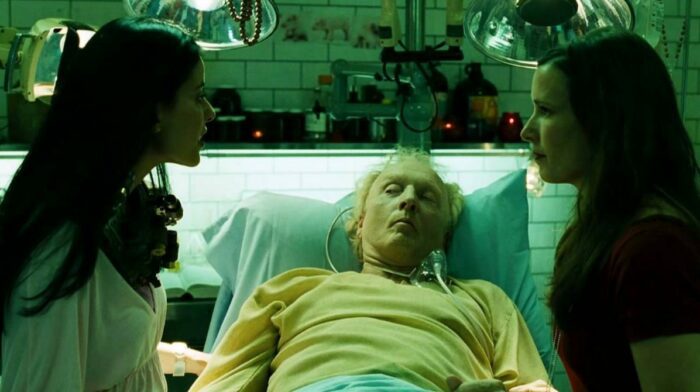
What Jigsaw’s long-term plans are in regards to his participants surviving the traps is a deeply intriguing hypothetical to consider. Aside from Amanda, Dr. Gordon is another example of a Jigsaw survivor. After being M.I.A. since the original Saw, he makes his grand return in Saw 3D as another Jigsaw accomplice. There are a few confusing plot holes to his inclusion—other than the fact that Dr. Gordon wasn’t mentioned at all for five films, therefore it’s a struggle to see how exactly he’d slot into the schedule of the other two accomplices. He also had a fairly lucrative career in medicine, and a wife and daughter, so did he just abandon it all? This is relevant because Jigsaw’s philosophy of ‘cherishing your life’ appears to only consider that life meaningful if it involves joining his own crusade and neglecting everything else you had going for you. He doesn’t want them to cherish the life they had, he wants to create a new life for them, specifically serving him and his rehabilitation methods.
The only other Jigsaw survivors we see throughout the films appear in passing; namely, in a group therapy session in Saw 3D. Now, this scene is integral for discussing the success rate of Jigsaw’s methods. One survivor was put in a trap with her abusive partner and ‘chose to live,’ allowing her to be free of him. She claims that “it was the best thing that happened to [her].” From this perspective, Jigsaw’s trap achieved its intended purpose; it gave this person the tools to not only save her own life but also free herself from an abuser. This would naturally lead to being able to cherish your life, as it empowers the victim, turning her into a survivor, and removes the source of her trauma from her life.
On the other hand, another survivor interjects with, “It’s a bunch of bullsh*t. […] Know the best thing that happened to me after cutting off my own arm? Handicap parking at the damn mall.” Clearly, the traps don’t give every participant an appreciation for their life. This person’s life has been impacted negatively, as she has literally lost a part of herself. For her, there is no psychological or philosophical benefit. All that has happened is that she now has a disability, and is attending therapy due to added trauma.
These two juxtaposing examples prove that there are too many individual, uncontrollable factors in the games for them to all be successful in supporting Jigsaw’s approach and methods. The participants, their ‘crimes’ or problems, their circumstances, the design of the trap itself, the number of participants in said traps—all these aspects vary so drastically from game to game that it is impossible to say definitively whether or not the games work. Of course, a woman empowered to free herself from her abuser would appreciate the game more than someone who lost an arm. Even in the former case, there is no way this woman came out of that trap psychologically unharmed. She had to go through physical trauma as well as cause another person to die in there. Regardless of her personal relationship or feelings towards him, being involved in his death would almost certainly have had an emotional impact. Judging by the fact that both of these survivors have sought out therapy, they must be struggling with the trauma of their experience on some level.
Hilariously, Jigsaw essentially likens his traps to therapy. In Saw X, he is asked to describe his occupation, to which he replies, “I help people overcome inner obstacles. Help them make positive changes in their lives.” This dialogue does seem to be rather tongue-in-cheek, as Saw X as a whole feels more playful and pokes fun at the Saw lore, if you will. But there is an element of integrity to what Jigsaw says—it’s only amusing because he’s trying to describe his profession conveniently without mentioning the murder part. You can tell that he does genuinely believe he is helping people, in the position of some sort of ‘life coach.’ I think ultimately, where his approach fails (aside from the obvious serial killings), is that he is applying a theory and method so profoundly subjective to a bigger picture. The results will differ so vastly from case to case, and, even though he designs the traps for specific people and their specific circumstances, he neglects to consider the variables.
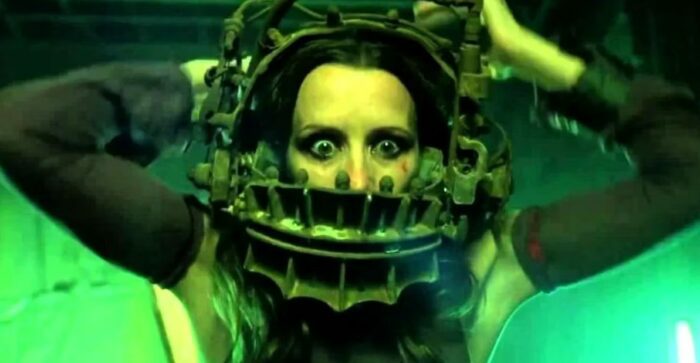
Another element of Jigsaw’s philosophy that is important to acknowledge is why and how he formulated his theory in the first place. In Saw II, it is revealed that, in response to his terminal cancer diagnosis, Jigsaw attempted suicide. This is what he tells Eric Matthews:
It was the moment I decided to end my life that started me in my work and brought meaning to it. I had literally driven myself to suicide, and I had failed. My body had not been strong enough to repel cancer cells, yet I had lived through a plunge off a cliff. But, to my amazement, I was alive. And I was determined to spend the rest of my days testing the fabric of human nature.
So, Jigsaw’s lived experience of attempting suicide gave him the appreciation for life that he then vowed to bestow upon others. Now, that’s great for him, but forcing it onto other people…that’s where it falls apart. In Saw, Jigsaw puts a man struggling with depression and self-harm into a trap, asking him in the tape recording, “Did you hurt yourself because you truly wanted to die…or did you just want some attention?” Culturally, this is very much reflective of the lack of understanding regarding depression and mental health issues in the early aughts. But within the narrative of the film, it’s ironic that Jigsaw has a very similar struggle to this man, but invalidates his experience. He could well be wording it this way to rile him up, to try and trigger that survival instinct to get him through the game. However, I believe it demonstrates Jigsaw’s double standards and reductive methods. He survived his near-death experience and had a certain epiphany afterward, so anyone else going through that same experience should, too. They should have the willpower to survive if they really want to live. Not only that, but they should have a new perspective on their life afterwards, and even dedicate that life to supporting and executing his methods alongside him. This is essentially what he expects of each and every participant in his games. And that’s exactly why it doesn’t work. You can’t expect everyone to have the same reactions to you in a particular situation (which, by the way, is miles apart from his own situation—he chose to drive off a cliff, yet his participants don’t choose to be kidnapped, drugged, and put in their traps in the first place), and to then also share the same philosophy after the fact.
“Welcome to your rebirth.”
So, what have we learned from Jigsaw’s teachings? Well, mostly they’re jam-packed with contradictions. Even the theory of appreciating life after experiencing extreme physical torture is full of holes (trauma is the main consequence of this), but his additional method of the traps is blatantly immoral. Claiming you’re not technically killing anyone is an argument with little to no backbone. Despite this, the application of such horrific methods to achieve a positive outcome of cherishing one’s life is truly fascinating.
If nihilism is the rejection of moral principles in the belief that life is meaningless, then Jigsaw’s philosophy is almost the opposite: a reconstruction or reframing of morals in the belief that life is meaningful. The traps are a means to an end. It’s worth mentioning, however, that Jigsaw seems to get some pleasure out of said means. So much effort goes into his traps; the construction, the tape recordings, the aesthetics of it all. They’re not practical by any means but intricately designed and executed. Yes, his motivation is to improve people’s lives, but this is somewhat of a hobby. Did he need to make Billy the puppet to convey the idea of life being meaningful? Of course not. In a way, these games are an art to him. When he looks at his contraptions, and even the results, there is no doubt in my mind that he sees beauty.
Another question is, what do the Saw films want us to think? Do they want us to sympathize with Jigsaw, and believe in his methods? Are they condemning his actions and/or philosophy? Or is it simply all a bunch of torture porn, intended to be a silly, gory spectacle? I think all of the above apply at various points. The first installment in the franchise is mostly a crime thriller, with the cops hunting Jigsaw down, framing him clearly as a serial killer. The latest installment, however, focuses a lot on Jigsaw’s backstory and being scammed by a faux healthcare company, positioning him more as a victim getting righteous revenge. Who knows! It’s really up to the audience—after all, something that’s extremely evident from this analysis is that individuality plays a huge role in any emotional reaction or philosophical belief. So, make your choice…and just be glad you don’t have to saw your foot off to do so.

